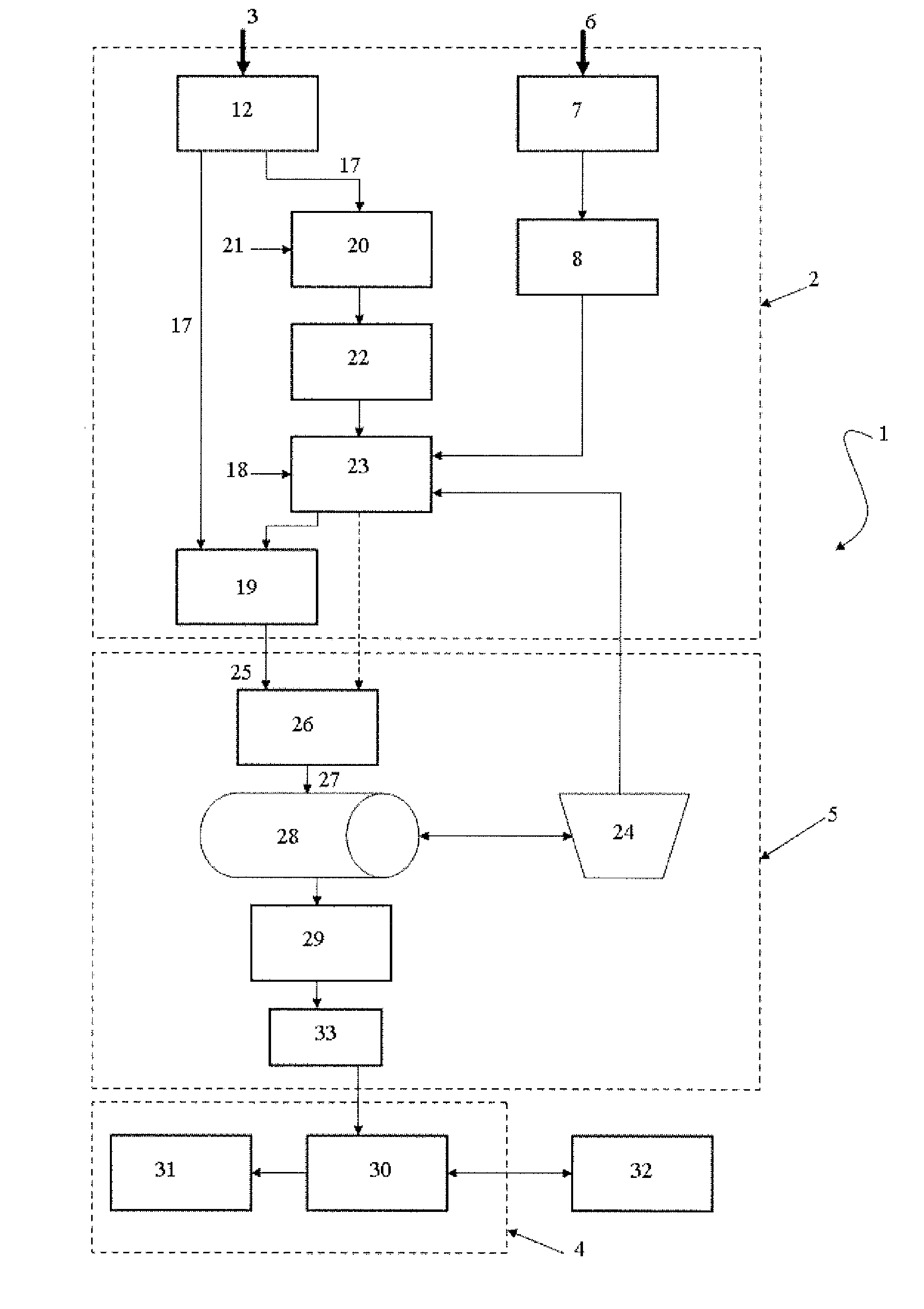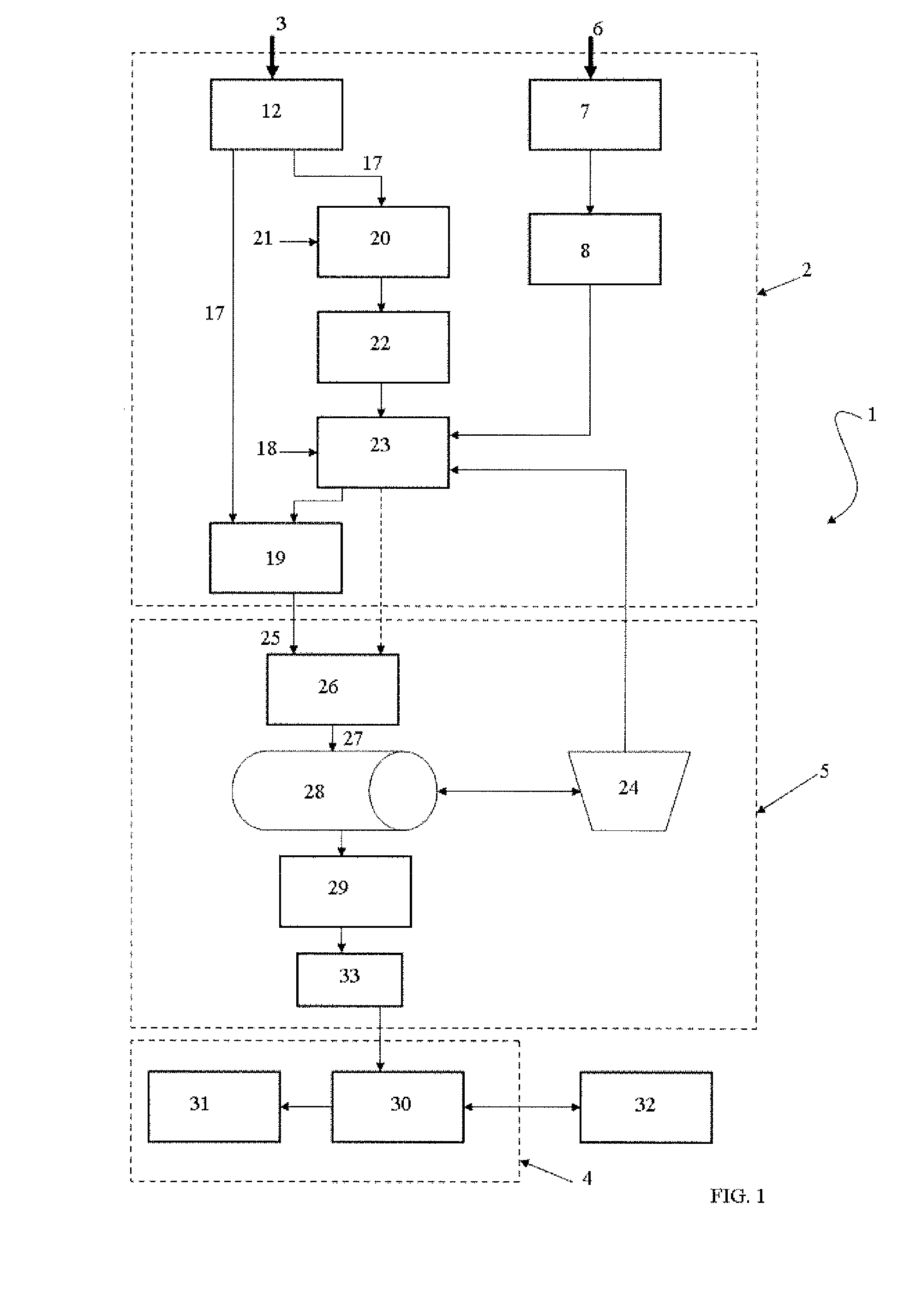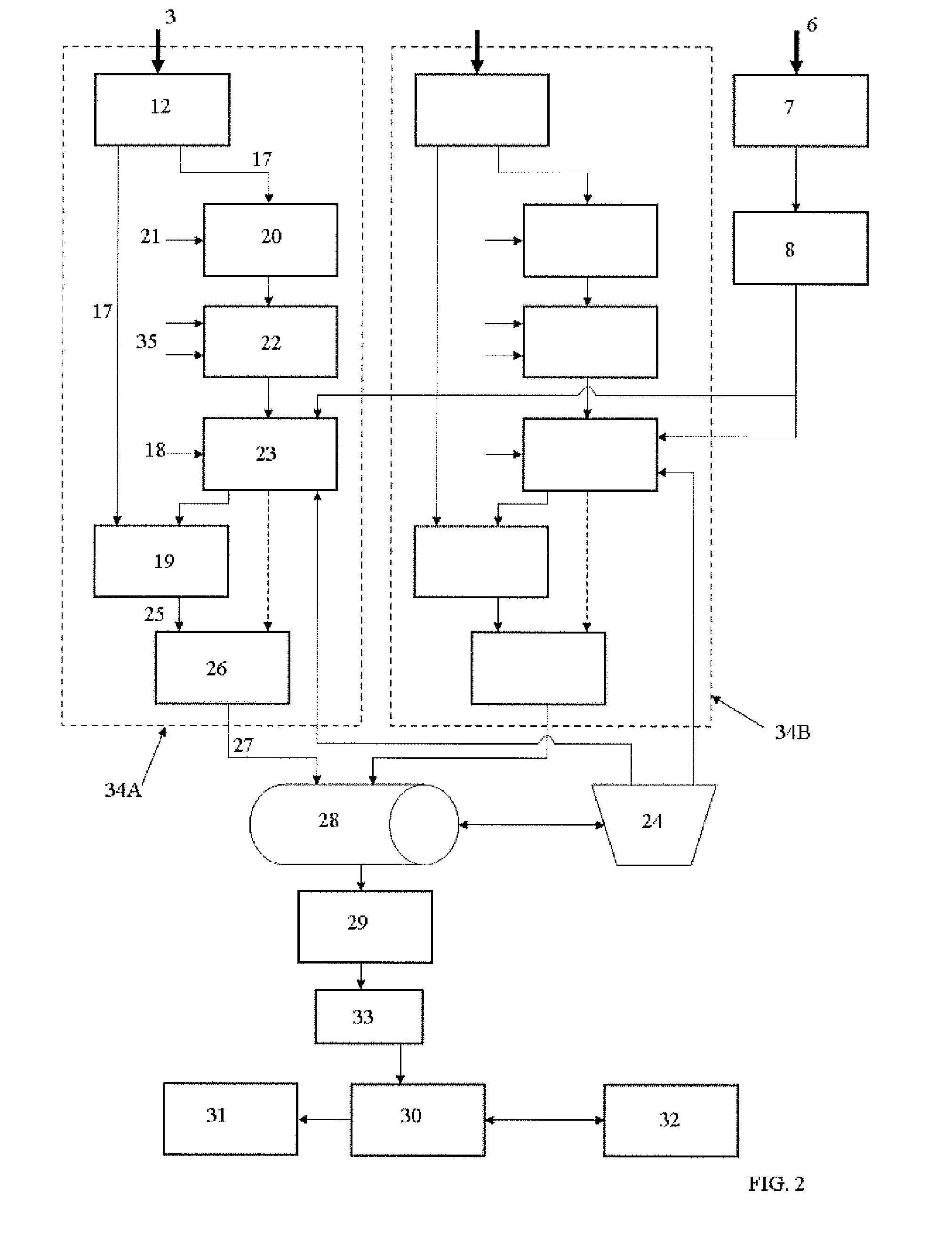Thus, partial discharges have, for their nature, a development that is substantially limited to a defect of the insulating system.
However, the measurement together with the subsequent evaluation of partial discharges for diagnostic purposes has not yet completely been included among industrial standards, as an instrument to plan the maintenance and / or replacement of electrical components operating at
high voltage, because of the difficulty that is encountered in interpreting the results of the measurements.
With regard to the difficulties in the interpretation of the results of the measurements of partial discharges, they depend not only on the need to have available a specific experience and case
record, but also on the fact that the measured data could be unreliable or not significant.
In this light, the problems that can compromise diagnostics through the evaluation of the measurements of partial discharges are essentially two:in the measurement of the signals associated with the partial discharges, there is a loss of information that is essential for a subsequent evaluation of the signals for diagnostic purposes (a loss of information can be constituted, for example, by a failure to measure an impulse, or by a failure to measure the wave form of a pulse);during said measurement,
noise may be superposed to the
discharge signals, or signals due to different sources may be mutually superposed, with a consequent objective difficulty in interpreting the results, given the impossibility to perform significant
statistical processing on heterogeneous data and / or on data that are not pertinent to the individual phenomena to be evaluated.
Therefore, from the viewpoint of the instrument used to measure the signals associated with partial discharges, there is the problem of acquiring, very rapidly and efficiently, electrical signals having a
high frequency content, preserving, as much as possible, the information content of the signals themselves.
The solution of the aforementioned problems is particularly difficult, considering the need to measure the partial discharges and to evaluate the state of the electrical system in unsupervised fashion, i.e. minimising the intervention of an operator (the operator, in certain cases, could be absent altogether, as is the case in line monitoring systems).
The main difference between peak detectors and controlled oscilloscopes is that peak detectors are not able to
record the
time dynamics of the detected pulse, because they do not perform an actual sampling of the
signal, unlike oscilloscopes, which instead do perform said sampling.
Peak detectors entail a drastic loss of information in the detected signals, due to the strong compression of the information associated with the
partial discharge signal, due to the fact that they do not sample the detected signal and to the presence of the quasi-
integrator filter.
In particular, they do not allow to acquire significant information about the wave form of the pulses of the detected partial discharges.
Therefore, they do not allow to separate (especially in automatic, unsupervised fashion) the
noise from the
discharge signals and, to a greater extent, the discharge signals coming from different sources.
Moreover, peak detectors have a limitation in the phase of attributing the sign to the measured amplitude for a pulse, said sign having considerable importance, as is well known, in interpreting the results of the measurements (which are carried out, in most applications, subjecting the electrical components in question to alternating
voltage).
In particular, peak detectors do not allow to verify said attribution (possibly by performing the sign attribution step again, on the basis of a different criterion /
calculation algorithm).
With regard to the attribution of the sign of the discharges, it should also be noted that an additional limitation is associated with the instruments that detect pulses using a
narrow band; a limited bandwidth could alter the time dynamic of the pulse, especially when the pulse has very rapid changes over time.
The procedure is complex in itself and it provides a subjective evaluation of the state of the insulation.
To this should be added that, in many case, the operator's experience is anyway not sufficient to compensate for the loss of information during the signal detection step.
However, said instruments do not allow to detect the wave form of the pulse, i.e. the profile of the pulse amplitude over time, said wave form instead having fundamental importance for the purposes of a subsequent
diagnostic evaluation of the acquired data.
However, they are definitely costly and poorly reliable, especially in on-site applications, because they are particularly exposed to failures (e.g., in the presence of overvoltages).
In fact, use of oscilloscopes is quite limited as far as field applications are concerned.
Moreover, they are generally not able to reject
noise by means of algorithms programmable within them.
In this light, it should be noted that, in the
oscilloscope / computer system, the need simultaneously to acquire through more than one channel and thus to proceed with a simultaneous detection of partial discharges and of said additional quantities entails considerable disadvantages, linked to calculation times and to the complexity of the
software residing on the computer.
The need to transfer a large quantity of data makes the whole data measurement / acquisition process very laborious.
An additional problem is that the
oscilloscope / PC communication is relatively slow and the storage memory is necessarily limited (this entailing a disadvantageous increase in
dead time, i.e. of the time between the detection of one signal and the detection of the next signal), with the consequence that the
oscilloscope / PC system is in distress when it has to measure in significant manner slow phenomena superposed to fast phenomena (i.e. signals with high repetition rates which are acquired simultaneously with signals with relatively low repetition rate).
In practice, when it is necessary to measure a slow phenomenon (e.g., partial discharges that occur occasionally) simultaneously with a fast phenomenon (e.g. impulsive noise), the oscilloscope / PC allows only the two technical solutions that follow.Measurement of a predetermined maximum number of signals (the maximum number allowed by the oscilloscope); in this way (in the best case), the slow phenomenon is also acquired, but there is the
disadvantage of having to store an enormous quantity of data, with consequent slowing of all data measurement, transmission and, subsequently,
processing operations.Detection of a number of signals limited to a predetermined value; in this case, it is partially possible to speed up the process of measuring and subsequently processing the data, but there is the
disadvantage of rapidly saturating the memory, with the risk of not acquiring the slow phenomenon in significant fashion.
Therefore, the oscilloscope / computer system does not allow to measure different signals having mutually different
time dynamics in efficient, optimised fashion, for the purposes of a
diagnostic evaluation of an electrical system by analysing partial discharge signals.
 Login to View More
Login to View More  Login to View More
Login to View More 


